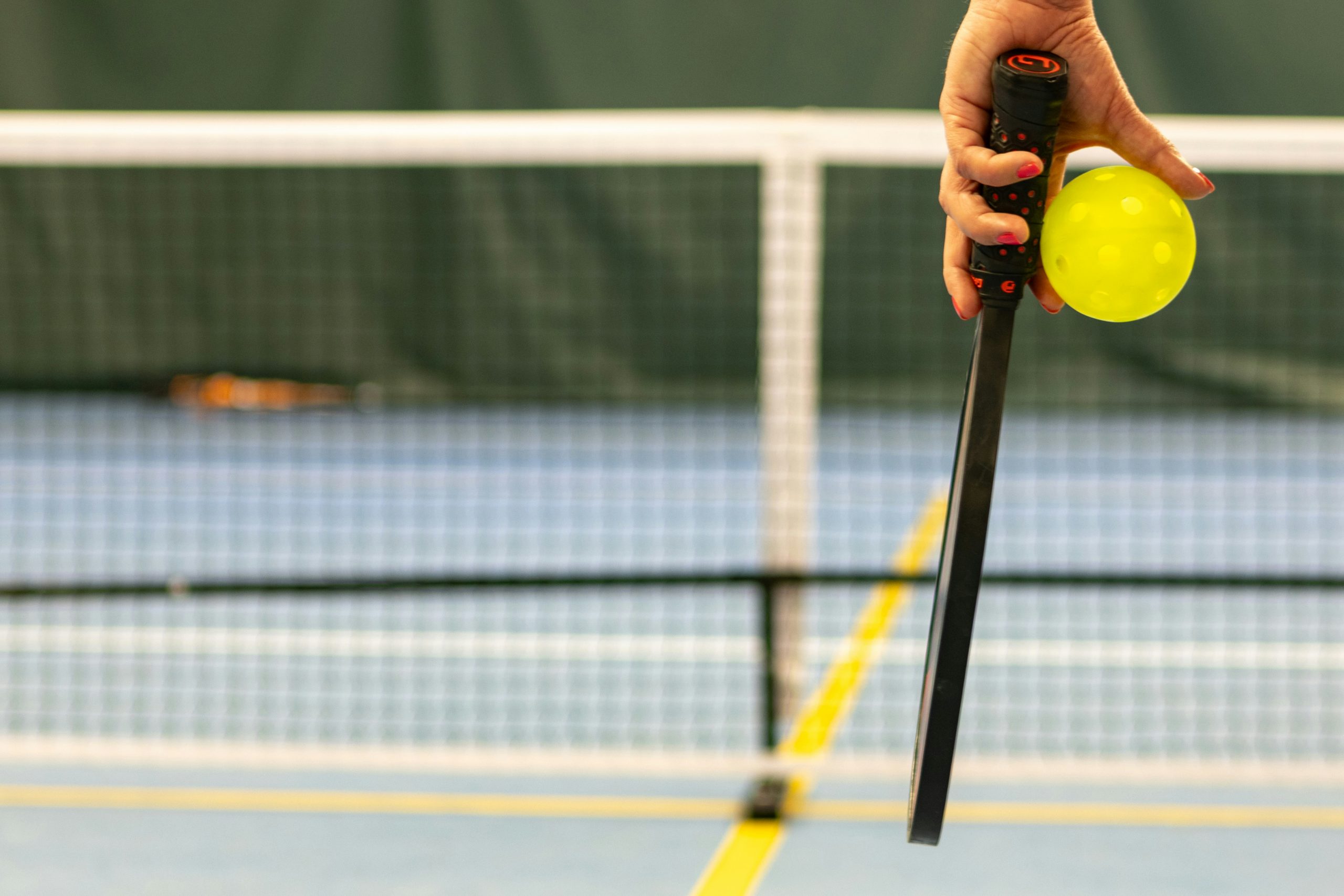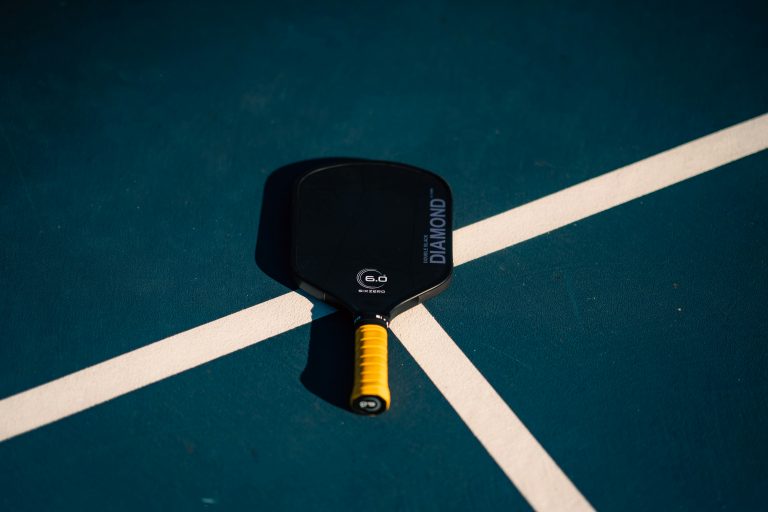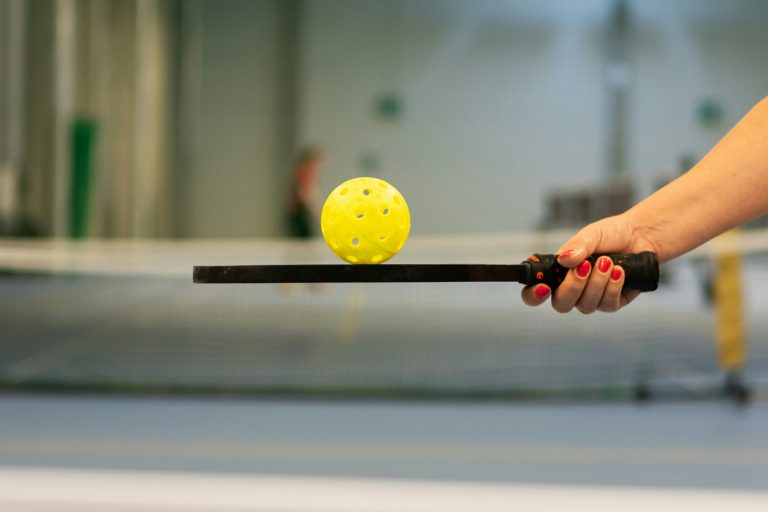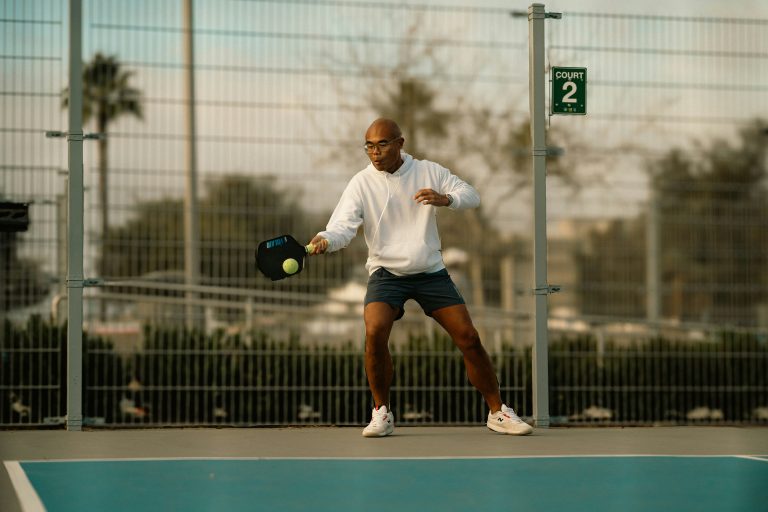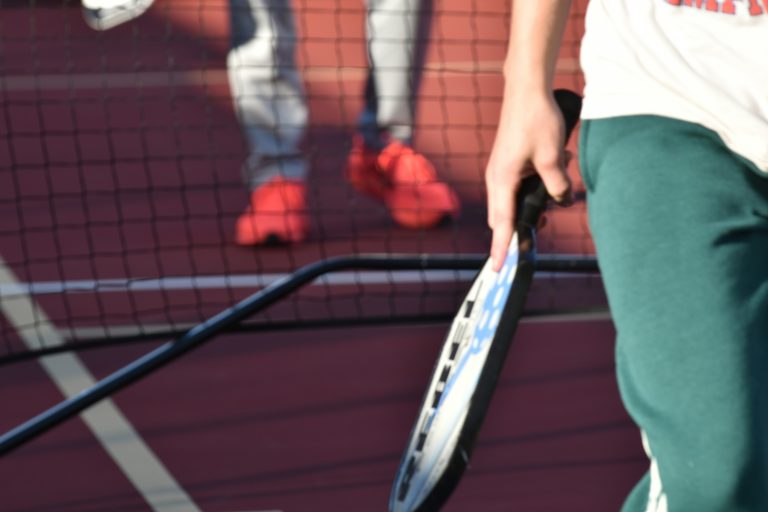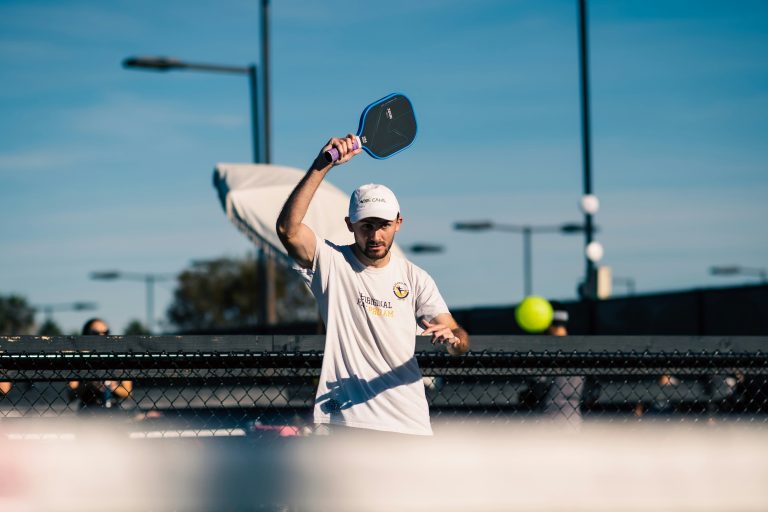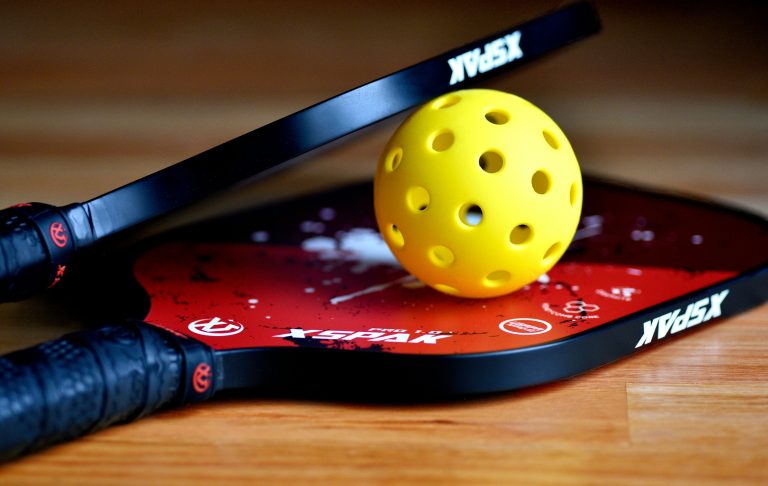Indoor vs Outdoor Pickleball balls— Do You Need a Different Paddle?
Updated September 2025
If you’ve ever walked into an indoor gym and felt like your shots were dialed in, only to head outdoors the next day and suddenly feel like a different player, you’re not alone. Many players chalk it up to “just an off day” or blame the wind. But the truth is, the ball itself is one of the biggest game changers in pickleball.
Indoor and outdoor pickleball balls may look similar, but they behave completely differently in flight, bounce, and feel off the paddle. And those differences often raise the question: should you be using a different paddle indoors vs outdoors?
This isn’t gear nerd theory, it’s practical stuff that affects how much fun you’re having on court and whether you walk away feeling confident or frustrated. Let’s dig in.
Quick Breakdown: Indoor vs Outdoor Pickleball Balls
Indoor balls
- Softer plastic with 26 larger holes
- Slower through the air, easier to control
- Less likely to crack, but more prone to “mushy” play after heavy use
- Easier to generate long rallies because they don’t skid as much
Outdoor balls
- Harder plastic with 40 smaller holes
- Faster, livelier, less forgiving on mishits
- Affected by wind (especially high lobs)
- More likely to crack after hours of play on hard courts
That difference in construction directly impacts how much pace, spin, and vibration you feel. And that’s where paddle choice comes into the conversation.
Does the Ball Really Mean You Need a Different Paddle?
Here’s the honest answer: you don’t need two paddles to play both environments. Plenty of people use one paddle for everything. But the ball’s behavior can highlight certain strengths and weaknesses in your paddle.
For example:
- Outdoor balls + thin stiff paddles → explosive drives but also more sting in the arm.
- Indoor balls + thick cushioned paddles → great control, but can feel dead and lack punch.
That’s why many competitive players keep two setups in their bag. Not because it’s mandatory, but because tailoring your paddle to the ball can make the game feel smoother.
What Works Best Indoors
Indoor games naturally slow down. The softer ball doesn’t fly as fast, and spin is a little less dramatic. To keep rallies lively, many players prefer paddles that give extra pop.
- Thinner builds (13–14mm) add liveliness and keep the ball from feeling like a marshmallow.
- Fiberglass faces pair especially well indoors because of their trampoline-like pop.
- Carbon paddles work indoors too, but some players find them a little too muted with the softer ball.
Popular indoor-friendly options:
- Selkirk Amped S2 — fiberglass face with great “punchiness” in the gym setting.
- Gamma Micron 2.0 — budget fiberglass, fun for rec nights.
- JOOLA Vision CGS 14mm — lighter carbon build that still grips for spin without being too sluggish.
What Works Best Outdoors
Step outside and the game changes. The harder ball skids, the wind plays tricks, and you’ll notice off-center hits sting more. That’s where thicker, more stable paddles shine.
- 16mm cores absorb vibration and give you more forgiveness on fast drives.
- Raw carbon faces help you shape the ball with spin, which becomes critical outdoors to tame wind and speed.
- Hybrid builds give you durability against outdoor abrasion while keeping power accessible.
Outdoor favorites in 2025:
- JOOLA Perseus 16mm — thermoformed carbon, a rock against pace.
- Engage Pursuit Pro MX 6.0 — plush feel for players who live in the kitchen.
- CRBN-1X Power 16mm — big spin and power for outdoor singles hitters.
Ball Choice Affects More Than Just Paddles
It’s not just the paddle that changes with the ball:
- Shoes: indoor shoes grip wood floors better, while outdoor hardcourt shoes are made for concrete and asphalt.
- Durability: expect to carry extras outdoors, balls crack fast.
- Noise: outdoor balls are louder off the paddle, which can matter in HOA regulated neighborhoods.
So even if you don’t swap paddles, being aware of ball differences helps you prepare your whole kit.
Tips if You Only Want One Paddle
If you’re a “one paddle to rule them all” kind of player, balance is the name of the game.
- Thickness sweet spot: 14–15mm works as a compromise, lively enough indoors, cushioned enough outdoors.
- Face material: hybrid carbon/fiberglass blends provide a middle ground between spin and pop.
- Grip comfort: outdoors tends to be harsher on the body, so choose a paddle with a dampened handle or add overgrip for cushion.
Balanced picks to cover both:
- Selkirk Vanguard 2.0 (15mm hybrid) — a reliable middle ground.
- Diadem Warrior Edge 16mm — outdoor-ready, but light enough to work indoors too.
- Onix Evoke Premier — fiberglass punch with durability outdoors.
Player Stories: Why Some Carry Two Paddles
Ask around your local courts, and you’ll hear plenty of anecdotes. One doubles specialist swears by his fiberglass paddle for Tuesday night gym leagues, but switches to raw carbon on Saturdays outdoors. Another player keeps the same paddle but adjusts with overgrip and lead tape depending on where he’s playing.
Owning two paddles isn’t a requirement, but if you play both environments often, it can feel like a small luxury that pays off in comfort and consistency.
Practical Buying Advice
Instead of running straight to checkout, try this:
- Borrow or demo paddles in both settings and pay attention to how the ball feels off the face.
- Notice fatigue: if outdoor balls leave your arm sore, a thicker paddle may help. If indoor balls feel mushy, a thinner, livelier build might restore fun.
- Ask what you value most: consistency across environments, or peak performance tailored to each.
The real win is understanding why things feel different, and then choosing gear with intention, not just guesswork.
Bringing It Together
At the end of the day, the ball itself changes pickleball more than most players realize. Indoors, the game slows and rewards poppy, lively paddles. Outdoors, the pace ramps up, and forgiveness and spin become critical.
Do you need two paddles? No. But should you consider it if you regularly play in both settings? Absolutely. The choice comes down to what you value more: simplicity, or maximizing performance in each environment.
Either way, once you understand how the ball interacts with your paddle, you’ll stop blaming your swing and start playing with purpose. And that’s when pickleball really gets fun.
FAQ: Indoor vs Outdoor Balls & Paddles
Do you need different paddles for indoor vs outdoor pickleball?
Not necessarily. Many players use one paddle everywhere. But indoor balls are slower, so thinner/livelier paddles shine indoors. Outdoor balls are harsher, so thicker, stable paddles can help outdoors.
Can I use outdoor balls indoors?
You can, but they’ll feel too fast on smooth gym floors. Most indoor facilities don’t allow it.
What’s the main difference between indoor and outdoor balls?
Indoor = 26 large holes, softer feel. Outdoor = 40 small holes, harder/faster, wind-resistant.
Which paddles crack outdoor balls faster?
Very stiff carbon paddles can accelerate cracking, especially in cold weather.
Is spin easier indoors or outdoors?
Spin grips well in both, but outdoors it’s more valuable to fight wind and skid.
If I buy one paddle, what thickness is safest?
A 14–15mm hybrid paddle is usually the most versatile for players who split time between indoor and outdoor.

